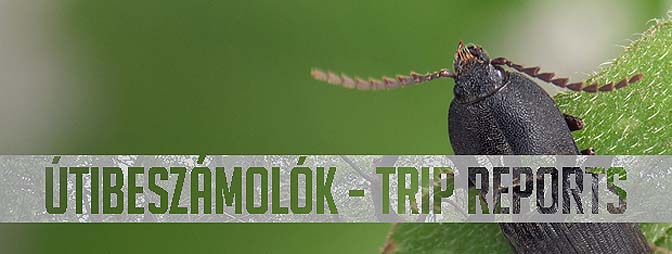
TRIP REPORTS
17 April 2011, Pécel-Ócsa
By Ottó Merkl and Tamás Németh.
Translated by Emese Jókuthy.
We looked forward to spending a day
in two sites of the metropolitan area of Budapest: the loess steppic
grasslands of Pécel-Vár-hegy and the surroundings of
Ócsa in the neighbourhood of a military base. Heading off quite
late we arrived in Pécel around noon. We were really amazed to
see the habitat teeming with beetles. We encountered several species
common in spring, and took as many pictures as we could. After a while
we drove to Ócsa to explore the sand grassland by the restricted
military area.
Zoltán Soltész and Ottó Merkl.
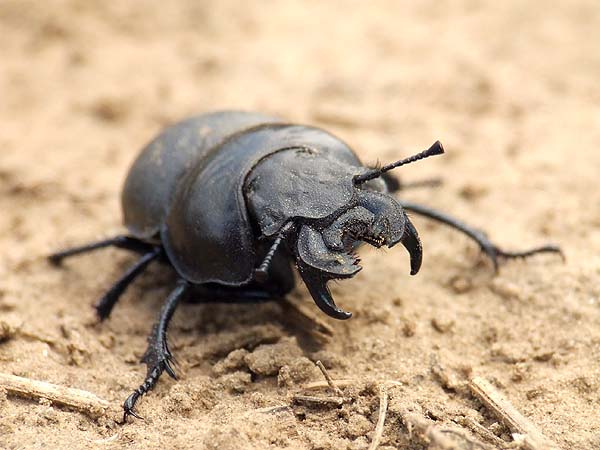

Flightless earth-boring dung beetle (Lethrus apterus) along the track. Before the 20th century this strange-looking beetle was regarded as a serious pest of vineyards. However, nowadays it tends to be much more rare, and got protected status in 2012.
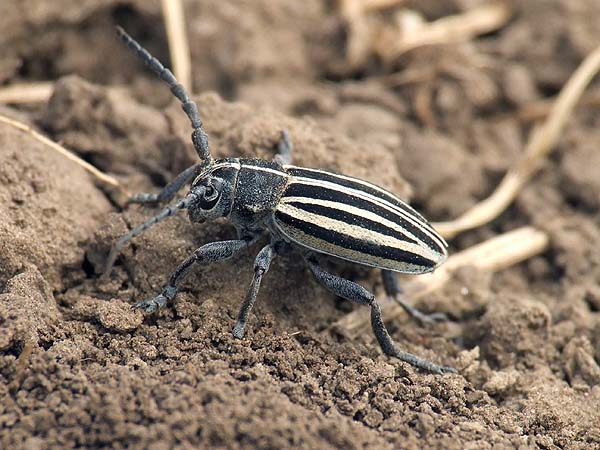
We found some common ground dwelling longhorn beetles such as the small
Pedestredorcadion scopolii that looks like a sunflower seed.

And its larger relative, Carinatodorcadion aethiops.
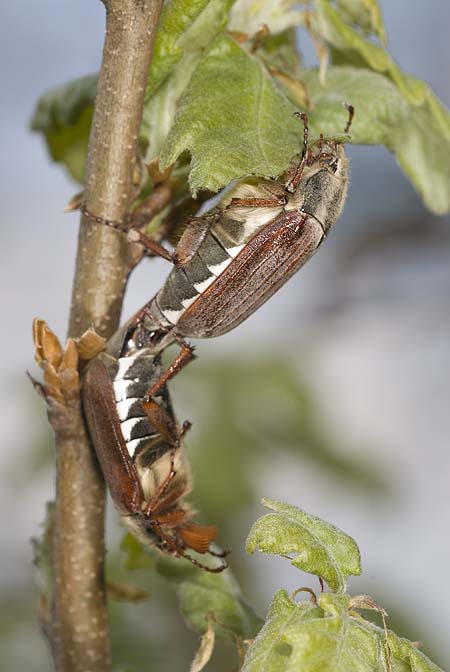
Cockchafers (Melolontha melolontha) (Photograph by Zoltán Soltész)
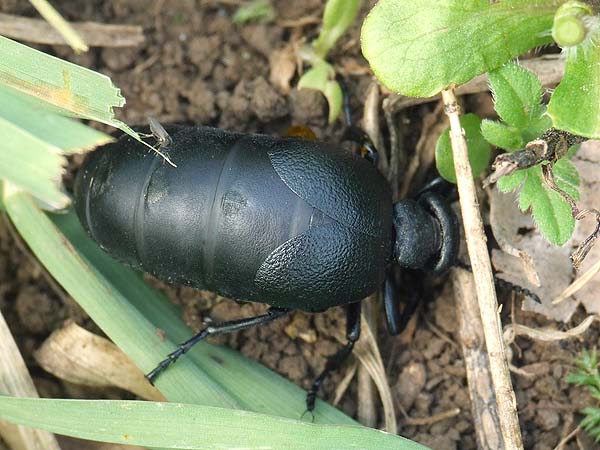
Many oil beetles were feeding on the grass. Natural and secondary loess grasslands are particularly rich in oil beetles. Meloe scabriusculus is an uncommon species of the area.
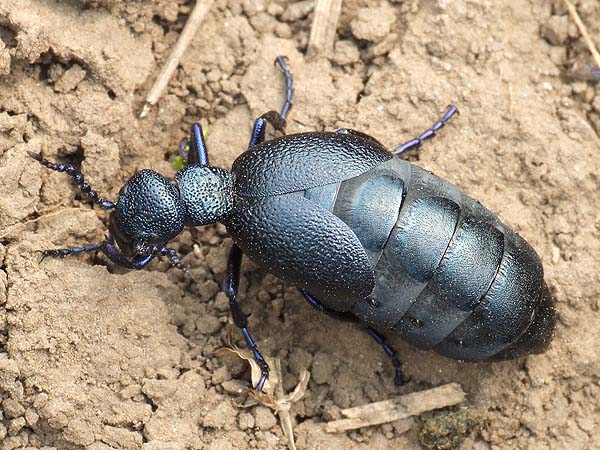
The black oil beetle (Meloe proscarabaeus) is the most
common and most widely distributed species of Meloe. Its range covers
the steppic grasslands of the Great Plain, the fringes of mountainous
forests and even agricultural lands of Hungary.

Meloe
cicatricosus is the largest blister beetle species in Hungary.
Besides loessy habitats it occurs in sand and saline grasslands as
well. Even the smallest specimens can be easily recognized by the
angulate anterior corners of the pronotum (contrary to the other
species in Hungary having rounded corners) and by the narrow lines
radiating in all directions from the punctures of the elytra, as
referred to by its synonymic name Meloe
punctatoradiatus.
The violet oil beetle (Meloe violaceus) often co-occurs with the black oil beetle, though it is more rare and prefers south-facing habitats sparsely grown with trees.
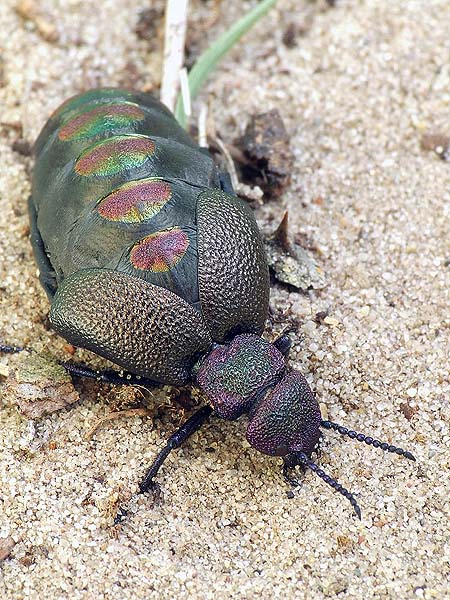
Meloe variegatus is one of the most spectacular blister beetles in Hungary.
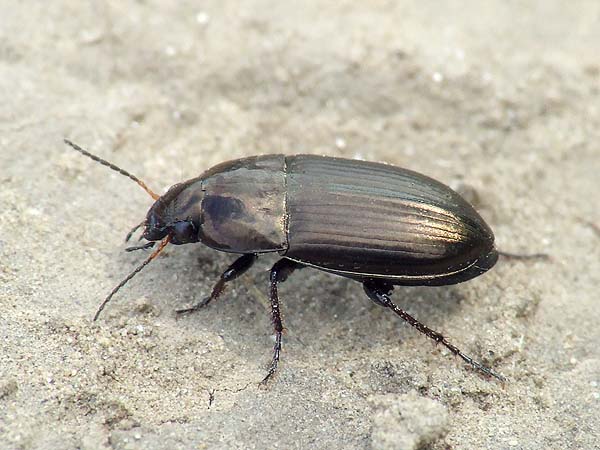
Common sun beetle (Amara aenea).
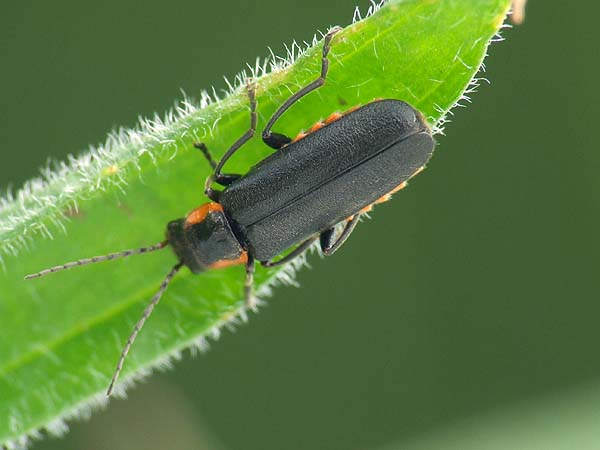
Soldier beetle (Cantharis obscura).
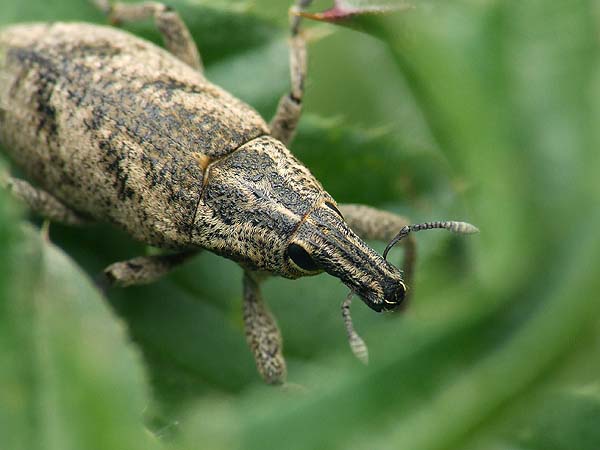
Cleonis pigra is one of the most common sluggish weevil species in Hungary.
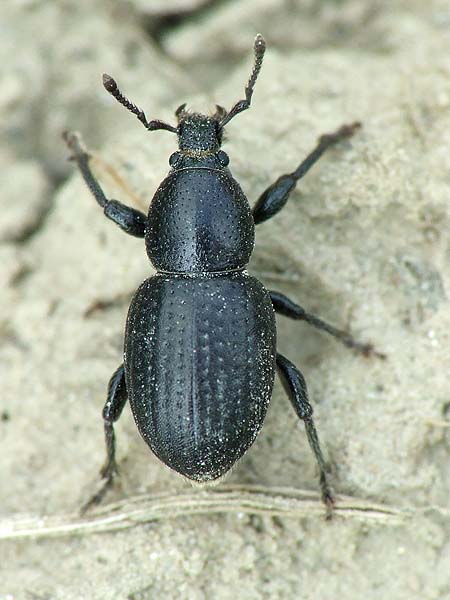
Unlike suggested by its Hungarian name (fekete barkó = black sluggish weevil) Psalidium maxillosum belongs to the subfamily of Entiminae and not the sluggish weevils (Lixinae), therefore it is rather related to the Otiorhynchus species
.
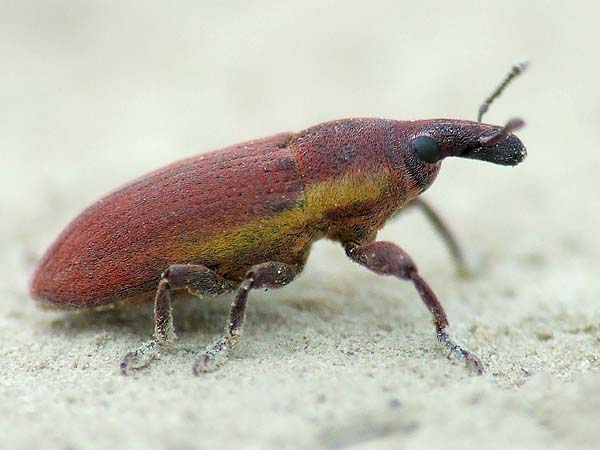
Rövid dudvabarkó (Lixus angustus).
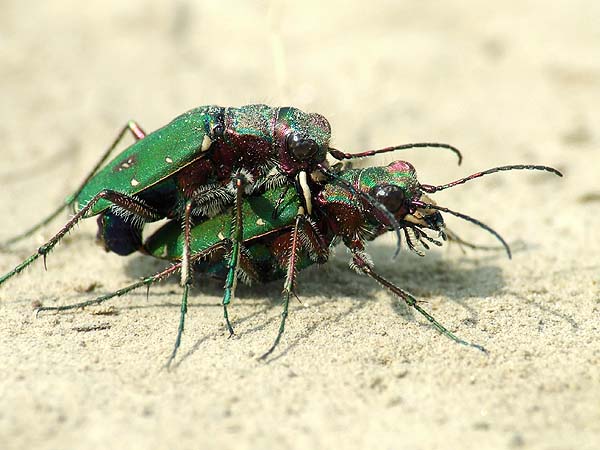
Green tiger beetle (Cicindela campestris) pair mating.

Kék címerespoloska (Zicrona caerulea).

The protected Protaetia ungarica is a typical species to loess grasslands.
 We
continued our trip in Ócsa.
We
continued our trip in Ócsa.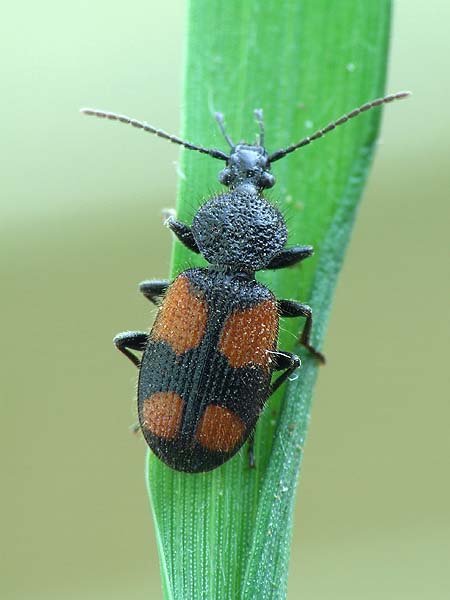
This strikingly patterned ground beetle (Panagaeus bipustulatus) is mostly associated
with marshy forests, but in the springtime it can be found in other habitats as well.

Agriotes sputator.

Cidnopus ruzenae occurs in sandy habitats during springtime.
The tiny click beetle Drasterius bimaculatus.
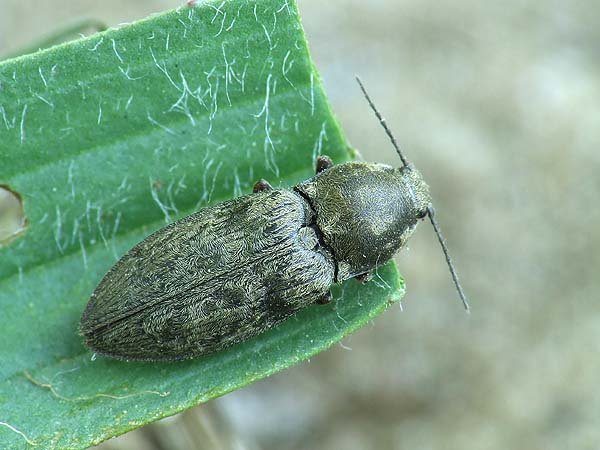
Prosternon tessellatum
Copyright
©
2009. Hungarian Natural History Museum,
Department of Zoology, Coleoptera Collection